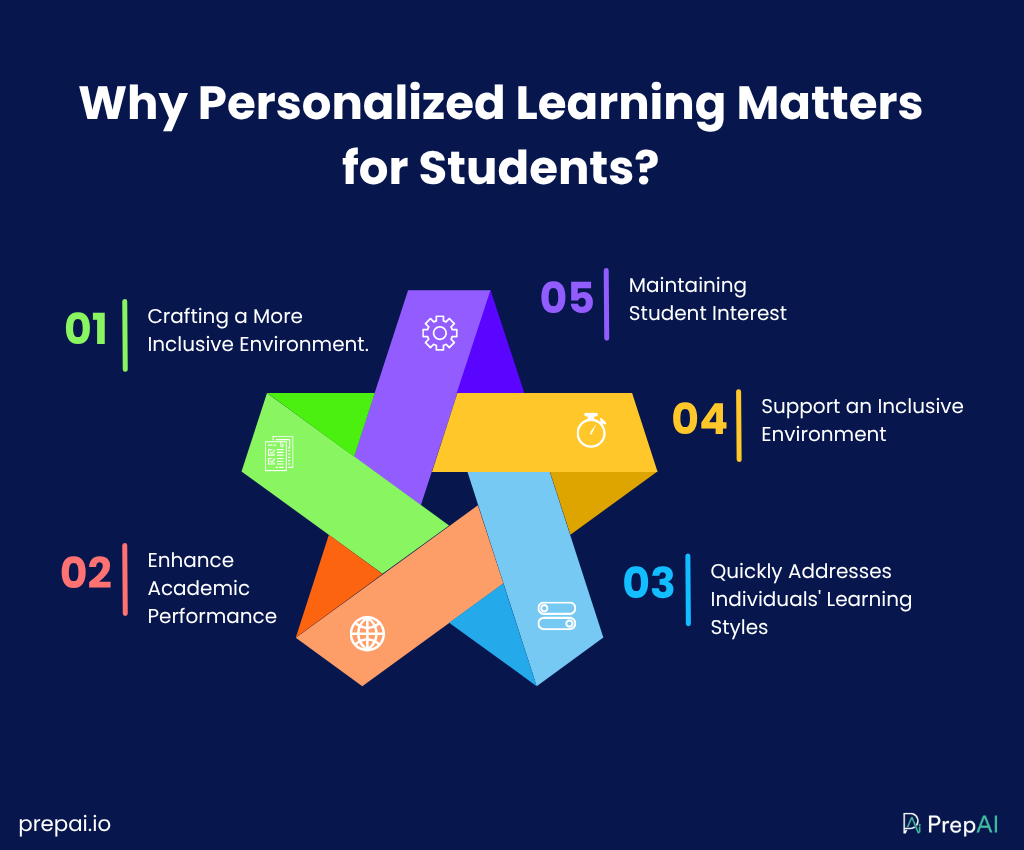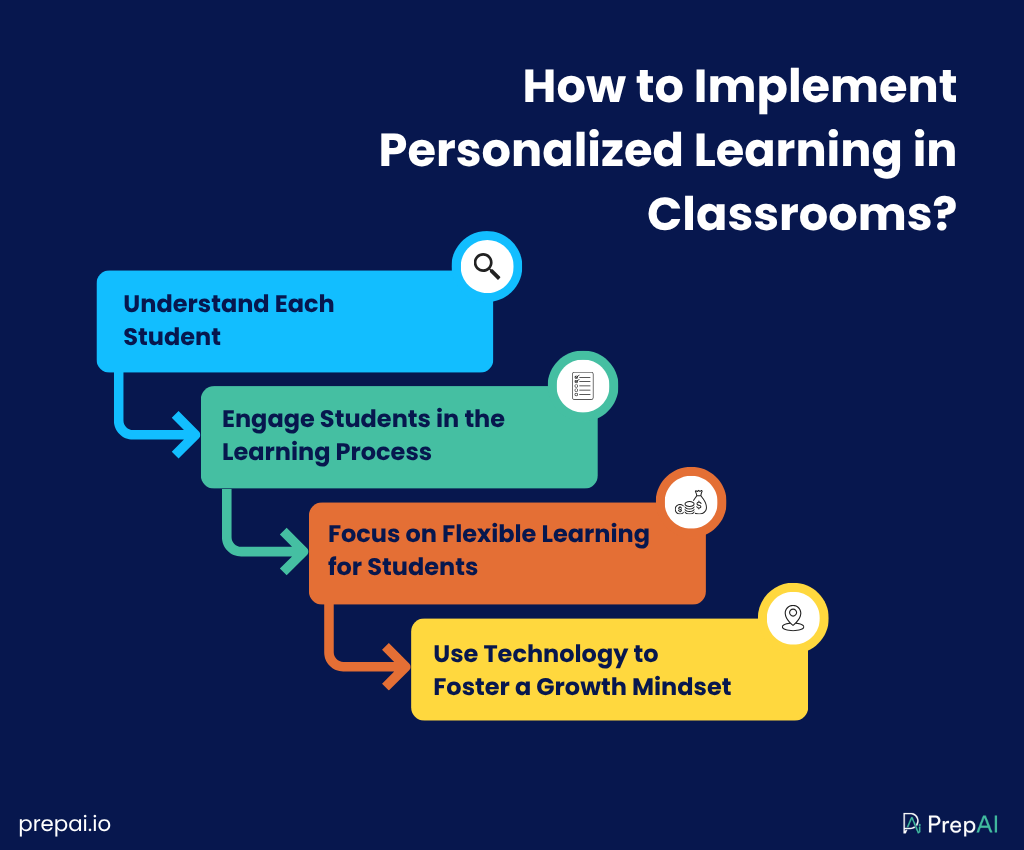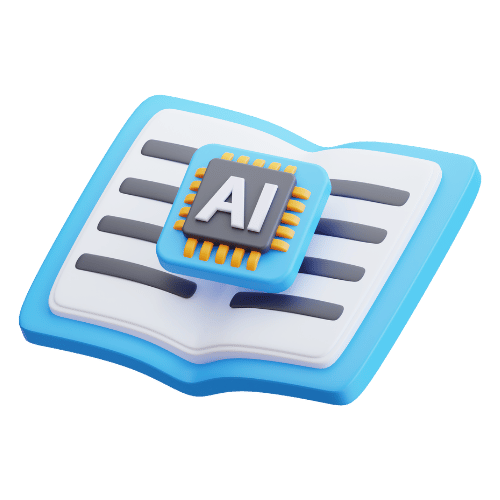Personalized learning is an approach used in educating students because it helps in catering to their unique needs. It tailors the learning experiences that resonate with the strengths of the individuals, their interests, and their learning styles. Here, let's understand how personalized learning will transform the classroom.
It is quite difficult for teachers to juggle students and make them learn things because every student learns at their own pace and in their own way. With traditional methods, making students learn is tough, but with AI tools, it is possible because it transforms the way the teacher teaches and also the way students learn because it can generate personalized quizzes and assignments in minutes, enabling immediate, personalized learning experiences.
The idea of personalized learning has gained traction in the field of education as a promising strategy to improve each student’s educational experience. Personalized learning seeks to increase the effectiveness and significance of education by recognizing and meeting each student’s distinct needs, interests, and strengths.
Customized education can be effectively integrated using AI. As per the McKinsey report, AI can free up around 30-40% of time, allowing teachers to devote up to 13 more hours each week to activities that directly enhance students’ learning. That’s more time for one-on-one help or coming up with innovative lesson plans. Thus, teachers can do it all using AI tools like PrepAI and enhance the student engagement.
Why Personalized Learning Matters for Students?
Students have a voice and a choice in their education when they participate in personalized learning. They actively participate in their own learning process rather than merely being passive consumers of information. They are allowed to investigate subjects that enhance their interest, participate in project-based learning, and use what they have learned in practical settings.

Crafting a More Inclusive Environment
Teachers can focus on a variety of tasks when they use AI for customized education. AI can help in lesson planning and creating personalized assignments that meet each student’s needs. Tools like PrepAI can support teachers in preparing assignments using specific languages or analyzing specific learning challenges of students. For example, if the student is facing difficulty with a math concept, teachers can use an AI question generator to generate step-by-step problem-solving questions. These questions are more relatable and easier to understand for the students. Thus, personalized learning keeps students engaged at the right level.
Enhance Academic Performance
Students widely benefit from personalized learning experiences because they meet them where they are. According to a recent study, teachers who use individualized learning paths have seen a 71% increase in exam results, while those who used normal e-learning had a 54% improvement. One effective strategy that can be used for reducing achievement gaps is personalized learning, which focuses on the individual needs of each student.
Quickly Addresses Individuals’ Learning Styles
Every learner accesses information differently; some students learn best through practice or conversation, while others learn best through visuals. Teachers can adapt their lesson plans to each student’s unique learning preferences using the best online quiz maker for teachers to offer them personalized learning. For example, One student who learns best through interaction can be given discussion-based tests, while another who struggles with reading-heavy material but thrives in visual learning can be given video classes or infographics. Through hands-on activities, visual aids, or adaptive tests, students stay more involved and retain information for a longer period.
Support an Inclusive Environment
With personalized learning, teachers can make education more accessible and let them gain different learning abilities. For example, if the students have difficulty reading long texts, teachers can make short videos or audios for the topic explanation. This makes sure the students don’t feel excluded while still understanding the subject. This provides every student an equal opportunity to learn and achieve by changing the way the content is delivered.
Maintaining Student Interest
As everyone knows, maintaining student engagement in a one-size-fits-all classroom may be challenging. While some children are rushing forward, others are dozing off. Personalized learning is easy and applicable in this situation. By adjusting assignments or conducting online exams to meet the needs of each student, teachers can keep them interested and avoid boredom or overload. Thus, students are far more engaged when the content truly speaks to them; therefore, it’s no surprise that studies indicate that personalized learning increases engagement.
How to Implement Personalized Learning in Classrooms?
We must change our perspective on education if we are to implement personalized learning in the classroom. It is about switching from the conventional teacher-centered approach to a student-centered approach in which learners take charge of their own education.

To establish a customized learning environment in the classroom, teachers can use the following steps:
Understand Each Student
The most crucial and first step of implementing personalized learning is to understand each student as an individual. This factor enables teachers to modify their lessons according to each student’s needs, learning preferences, and strengths, resulting in more successful and interesting learning experiences. Teachers can design personalized lesson plans using an AI question generator for teachers that meet the needs of each student by understanding their skills, limitations, interests, and preferred learning methods. Thus, it can craft assessments as per the needs of the students.
Engage Students in the Learning Process
Teachers must allow students to take part in their active learning process because it works as a cornerstone of personalized learning. It increases their engagement because students will take ownership of their education, like choosing their projects, setting their learning objectives, etc., and align them as per their unique needs and interests. This process helps students develop essential skills like self-assessment, problem-solving, collaboration, and communication. Students who participate in the learning process gain learning abilities such as planning, goal-setting, and self-evaluation and find solutions to their problems.
Focus on Flexible Learning for Students
Adapting your education to each student’s unique needs is known as flexible learning. This can be accomplished by altering the learning environment itself. Teachers can choose the information that is taught, the process by which it is taught, or the way that students demonstrate what they have learned. For instance, while teaching a subject like photosynthesis, a teacher may provide kinesthetic learners with hands-on experiments, auditory learners with class discussions, and visual learners with videos and visual aids. After that, students could decide whether to write a report, create a poster, or give a brief presentation to showcase what they have learned. Therefore, this approach makes learning more efficient and inclusive because students get access to content in a manner that suits them the best.
Use Technology to Foster a Growth Mindset
The traditional methods of education are no longer valid in the 21st century. Using technology to facilitate personalized learning in education can improve students’ cognitive and critical skills. Teachers can set up a flexible and adaptable environment with technology. Teachers can use exam generators to create gamified quizzes, MCQs, fill-in-the-blanks, and more so that students learn from their own mistakes. For example, with an AI-powered assessment tool, students can take a quiz more than once and receive customized explanations and recommendations each time. These methods promote resilience and consistency, which are essential components of a growth mindset, which emphasizes progress rather than perfection.
Conclusion
Personalized learning is becoming more and more important because it is positioned significantly to transform education with its effectiveness. Individualized learning comes with its own challenges. It calls for a mental adjustment, dedication to creativity, and an openness to change. However, the potential benefits of personalized learning can be better learning outcomes, increased student engagement, and the development of skills that will be useful in the future.Individualized learning is a huge advancement in the realm of education and using AI tools like PrepAI that will craft personalized assessments, boosting student engagement, and transforming your classroom experience. It is designed to make learning more interesting, significant, and productive for students and teachers by recognizing and meeting each student’s individual needs and interests.



